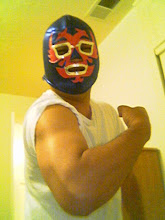In no-limit hold 'em, you must be able to put your opponent on a hand. It's not enough to just play your hand: figuring out what hands he/she plays and how they play them is one way to win consistently.
When your opponent enters a pot, are they raising with a big pair (AA, KK)? Are they limping in (i.e., calling) with suited connectors (e.g., 9 of hearts and 8 of hearts)? Are they smooth-calling (i.e., calling another player's raise) with garbage (e.g., 8 of spades and 4 of diamonds) in hopes of outplaying you after the flop?
Using your opponents' "tells" (body language, betting patterns, conversation, etc), you should be able to put him/her on a range of hands. If you go to the flop, then you'll be able to narrow that range down a bit. Poker is a game of incomplete information and in hold 'em, each card that's shown will help you make decisions as the hand progesses.
Scroll down below for a screen capture from one of the dozens of poker shows saturating TV these days. Professional Mike Matusow thinks he has the best hand, but it's pretty obvious that his opponent has a Big Pair. The correct play is to fold.
Ba-dum-dum. Thank you, I'll be here all week. Don't forget to tip your waitress.






No comments:
Post a Comment